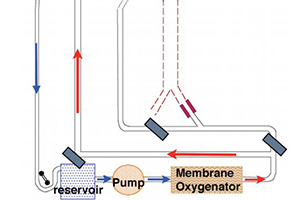A reappraisal of retrograde cerebral perfusion
Abstract
Brain protection during aortic arch surgery by perfusing cold oxygenated blood into the superior vena cava was first reported by Lemole et al. In 1990 Ueda and associates first described the routine use of continuous retrograde cerebral perfusion (RCP) in thoracic aortic surgery for the purpose of cerebral protection during the interval of obligatory interruption of anterograde cerebral flow. The beneficial effects of RCP may be its ability to sustain brain hypothermia during hypothermic circulatory arrest (HCA) and removal of embolic material from the arterial circulation of the brain. RCP can offer effective brain protection during HCA for about 40 to 60 minutes. Animal experiments revealed that RCP provided inadequate cerebral perfusion and that neurological recovery was improved with selective antegrade cerebral perfusion (ACP), however, both RCP and ACP provide comparable clinical outcomes regarding both the mortality and stroke rates by riskadjusted and case-matched comparative study. RCP still remains a valuable adjunct for brain protection during aortic arch repair in particular pathologies and patients.
Cover






